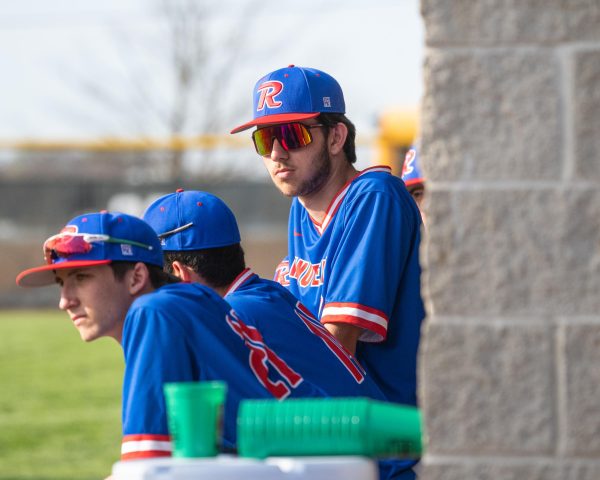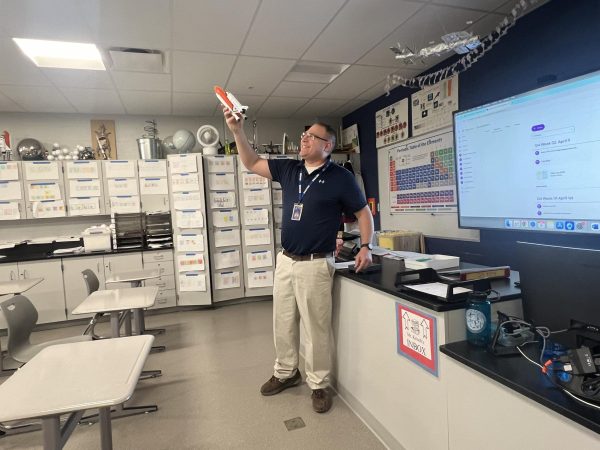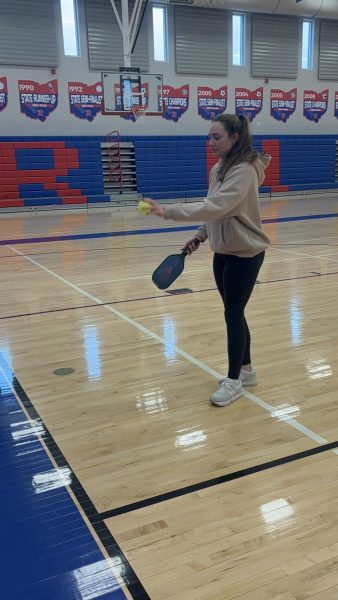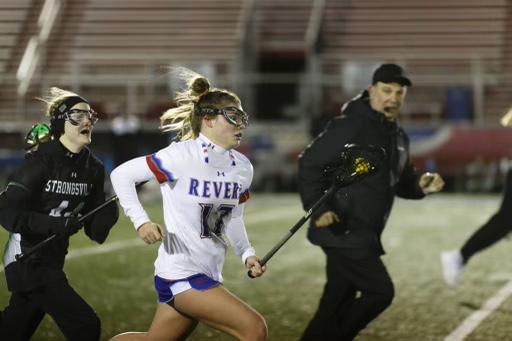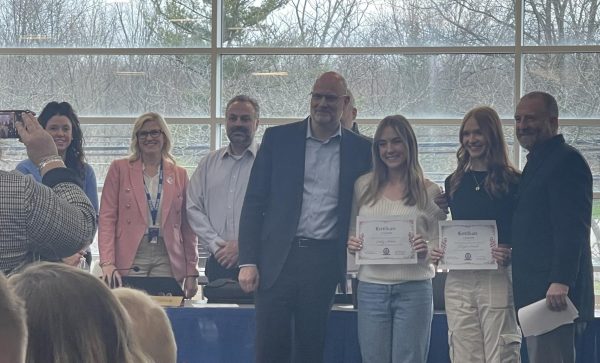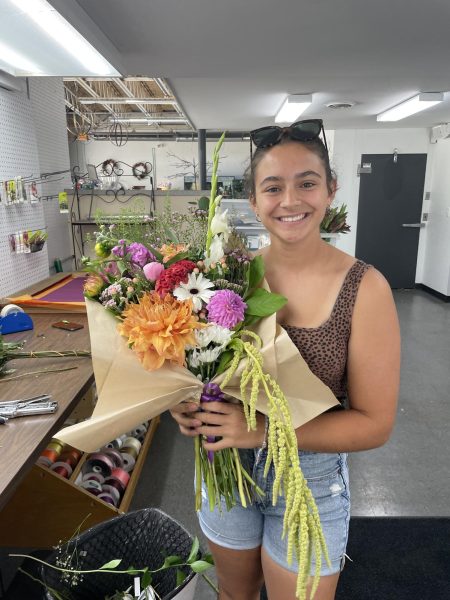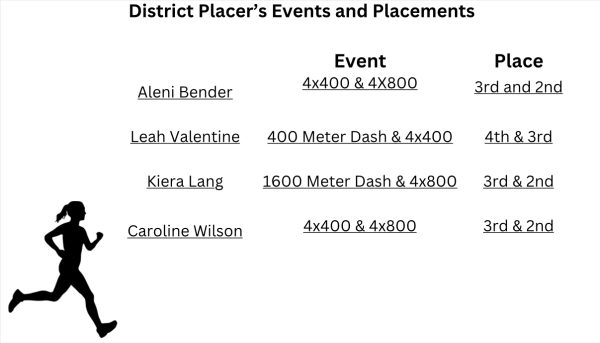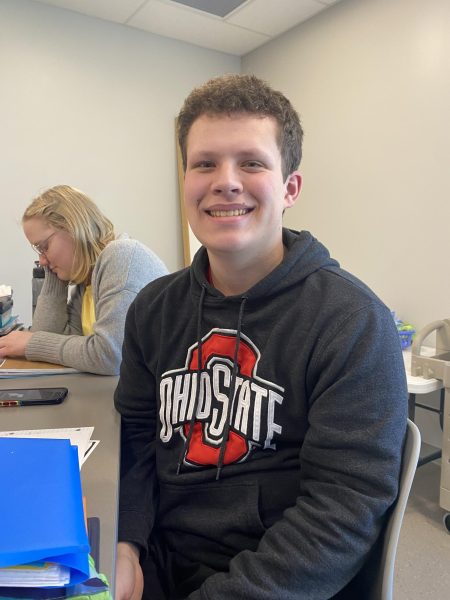Student researches disorder at university
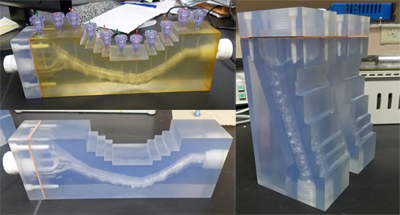
Allen utilizes these 3D models of the spinal cord in her research.
Junior Natalie Allen found the opportunity to better her anatomy skills and expand her scientific knowledge for Science Olympiad. With the help of her father and other adults involved in the medical field, Allen spent her summer at the University of Akron’s engineering building. During this time, she developed close relationships with others in her position, leading to the coining of a team name, the Tiger Team. A member of the team explained that a tiger team is an all-purpose team used for special projects in large organizations in other countries. Due to their time spent together and the bond created, the team even made tiger t-shirts to express their closeness. The tiger team soon found themselves engulfed in medical research.
Over the summer, Allen’s father, Dr. Phil Allen, introduced her to medical research at the University of Akron. Specifically, they worked in the Conquer Chiari research center. Conquer Chiari, a project in which researchers study various facts of the disorder Chiari Malformation. Allen originally intended to gain knowledge of anatomy to prepare herself for Science Olympiad. During this time, Allen gained interest in her research and plans to continue researching in her free time. Since studying Chiari Malformation, she has branched into researching other disorders as well.
According to the Conquer Chiari website Chiari Malformation, a neurological disorder, causes the cerebellum, the bottom part of the brain, to sink towards the spinal cord creating high pressure and several other symptoms. Allen noted that Chiari often goes undiagnosed.
“Chiari isn’t seen as a big [deal] because it isn’t the direct cause of death and usually goes undiagnosed. Doctors focus on treating direct symptoms of the disorder,” Allen said.
Phil explained that the most common type of Chiari is type one and that the most common symptom causes constant, unbearable headaches because of the overcrowding of spinal fluid.
Allen also learned that decompression surgery alleviates symptoms of the disorder, though the procedure does not fully release the pressure.
“Our research shows [the procedure] does not physically benefit [those affected by Chiari], but it takes out nerves so that they lose a sense of the pain,” Allen said.
Allen began helping Conquer Chiari research Chiari Malformation over the summer because her father and the rest of Conquer Chiari needed her help to look at structures of the brain.
Allen and volunteers for the research contribute by analyzing magnetic resonance images (MRIs) of those affected by Chiari and controls, those who do not have Chiari.
“[We look] for correlation between the normal measurements. We look at sagittal [side] images for tonsil dissension [when the lower part of the brain sinks down towards the spine] 5 mm or more to diagnose Chiari Malformation,” Allen said.
Allen mentioned that she took 21 measurements of the brain to measure statistical significance and then sent this data to other researchers to have analyzed and made into 3D images.
“Our 3D models are some of the few in the world,” Allen said.
Though Allen does not work too closely with her father, her work analyzing physical aspects of the brain helps him analyze cognitive effects of Chiari, such as mental illness and learning problems. Both noted their interest in observing people cope from the disorder.
“All of us have things [we are] good at and things [we are] not, and we figure out ways to compensate. I am impressed to no end how people [suffering from Chiari] figure out how to get through the day,” Phil said.
Also working with Ph.D. students at the University of Akron, The Ohio State University, and Brown University, Allen noted that she is the youngest person contributing to the research.
Working closely with Allen is a student at The Ohio State University, Danny McQuaide.
“I led the team [Allen and I are on], organized meetings [and] did the statistical analysis,” McQuaide said.
He also explained that he and Allen worked closely making angular, linear and area measurements on mid-sagittal (side) MRI slices of the brain.
McQuaide noted that Allen is an “excellent worker.”
“She is serious and professional, but has a fun sarcastic humor to her which is appreciated. She was always on time to meetings and often beat me to the lab, and when I say she often beat me to the lab, I mean she showed up every day before I did,” McQuaide said.
Along with gaining new relationships with those in the Tiger Team, Allen feels as though this experience researching Chiari alongside college students benefits her academic and medical future, giving her direct connections to doctors and researchers in the field. Fascinated by her experience and knowledgeable on the disorder, Allen wants to continue helping those affected by Chiari by talking directly to Chiari patients and continue partaking in the research efforts.

